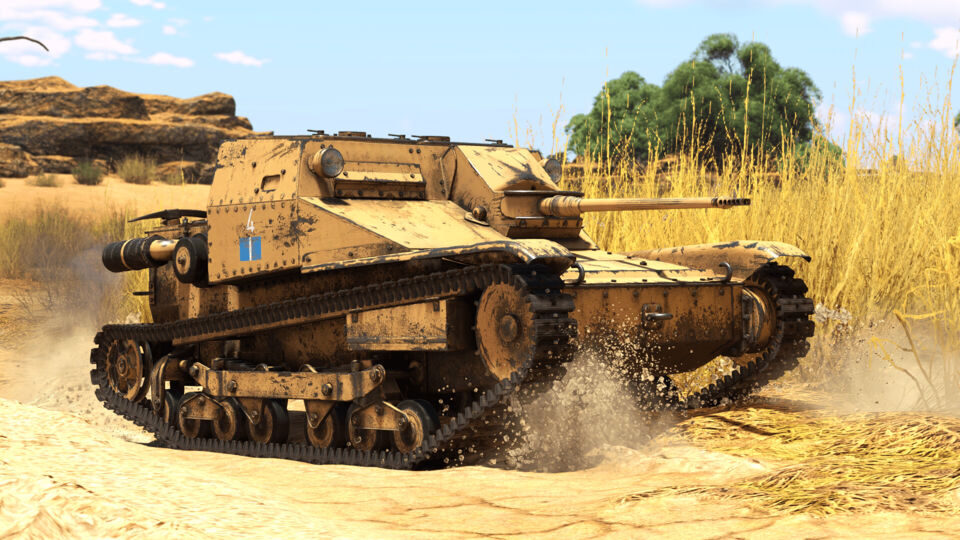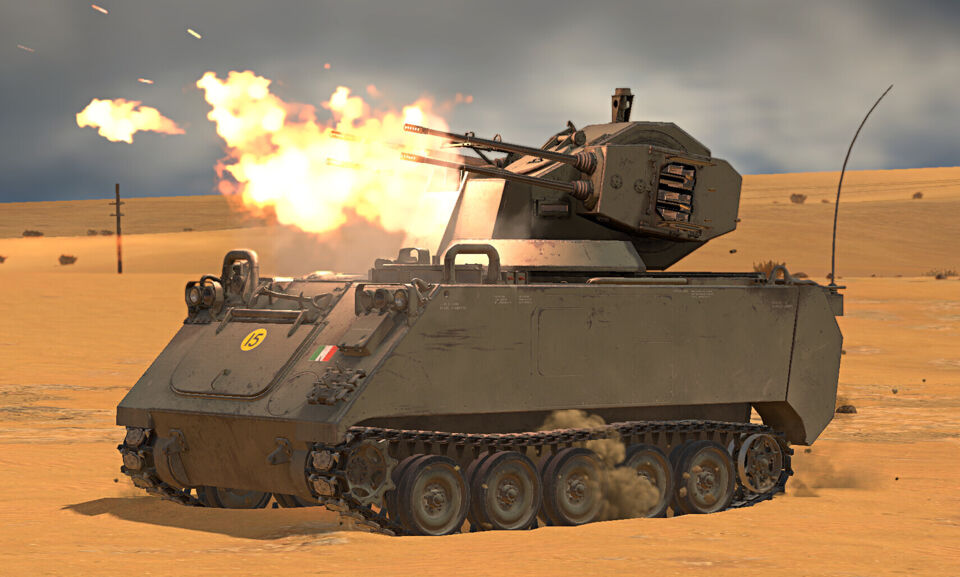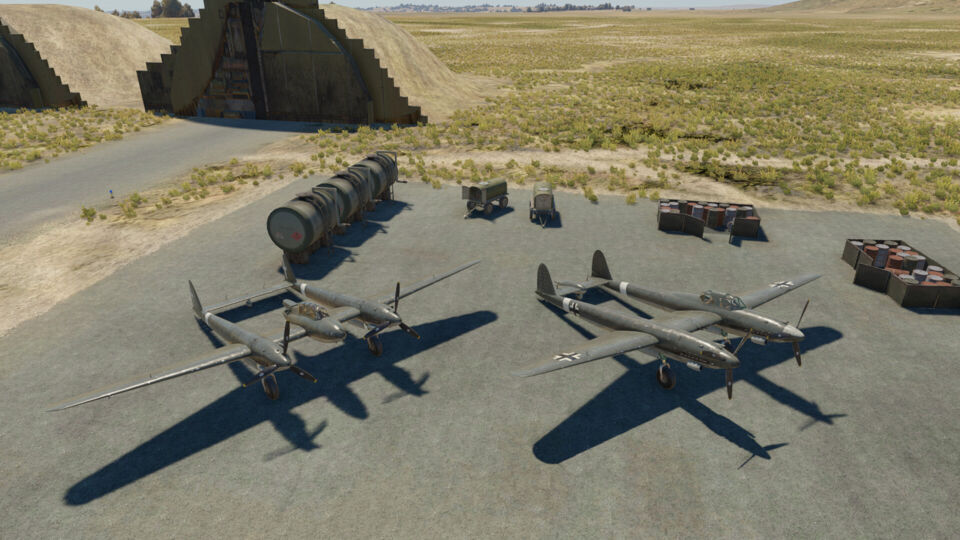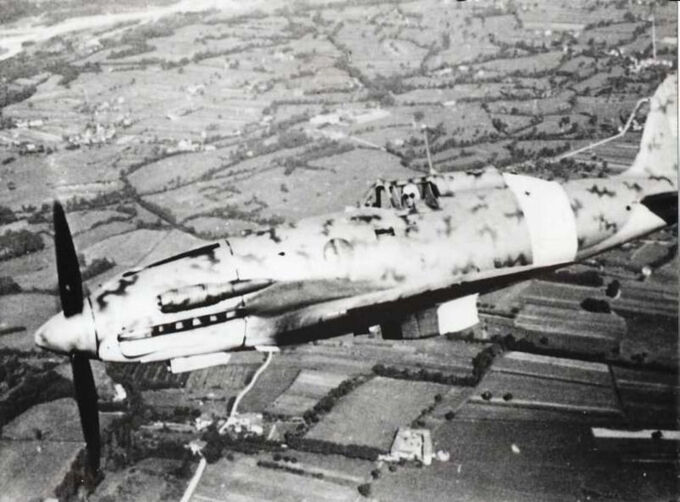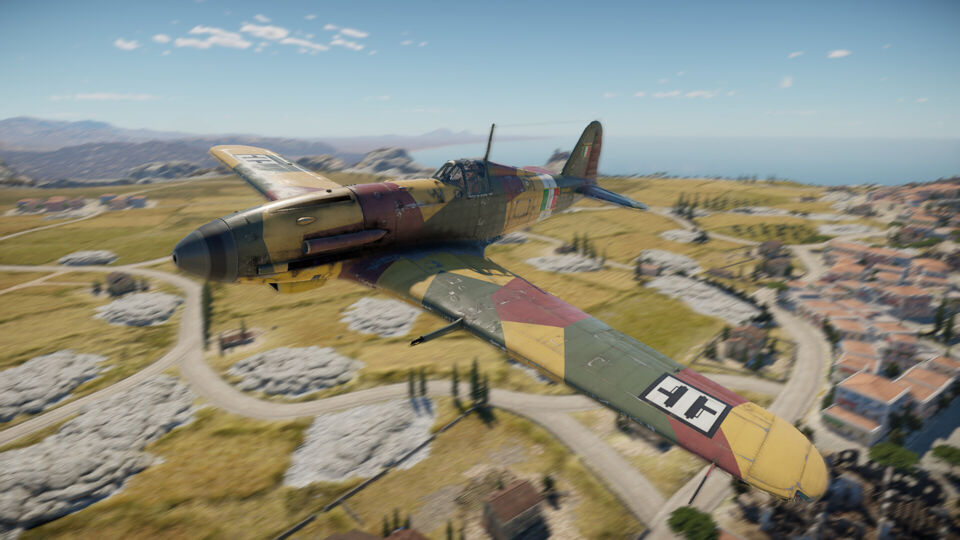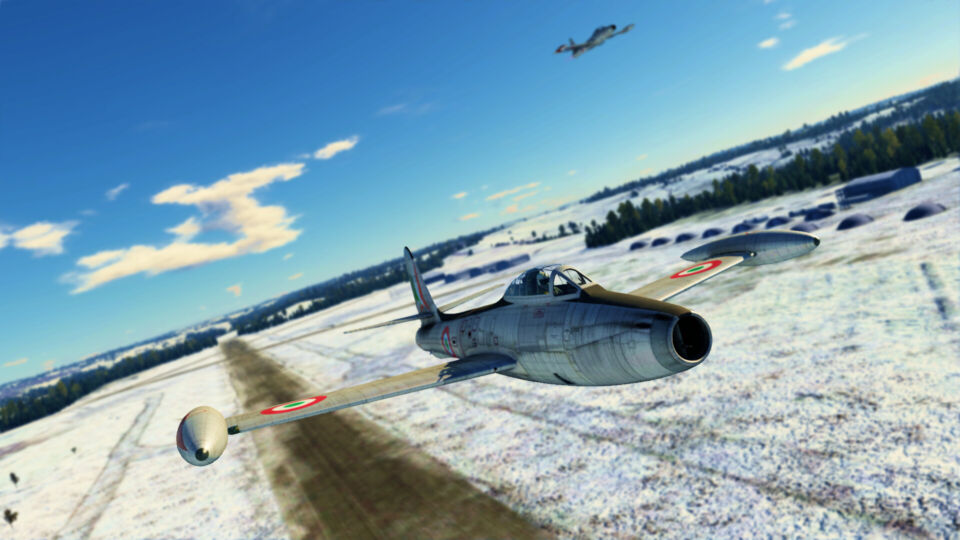#italy
It's been underestimated. It's been involuntarily towed around. It's been crushed by many Mauses. It's been made a meme by the War Thunder community, but at the same time, it's a fan favorite. However, when has anyone actually played it competitively? In today's post, I'm going to explain to you how to actually play the venerable L3/33 CC, a Rank I Italian tank destroyer. I'll go over its performance, strengths and weaknesses, and give you some pointers on how to play it in Ground RB.
The SIDAM 25 (Sistema Italiano Difesa Aerea Mobile 25) was an Italian SPAA produced by Otobreda and operated by the Italian Army. It entered into service in 1987 and kept serving with the Italian armed forces until the early 2000s. This vehicle was based on the M113 chassis with a new turret and gun system. The SIDAM 25 was armed with four 25 mm Oerlikon KBA cannons and a modern optronic system. In War Thunder, the SIDAM 25 is an anti-aircraft system capable of obliterating low-flying aircrafts thanks to the firepower of its four cannons. Sadly, it struggles against air targets beyond 2 km, and it is equipped with limited anti-tank capabilities.
When we think of twin-boom aircraft, the iconic American P-38 Lightning instantly comes to mind. Yet in the shadow of this legend, Italy’s Savoia-Marchetti crafted its own ambitious take on the design: the SM.91 and SM.92. Born from the Regia Aeronautica’s demand for a versatile multirole fighter, these aircraft blended Italian engineering with striking aesthetics. Though largely forgotten today, their unique story and untapped potential make them fascinating footnotes in aviation history and in War Thunder.
The Ro.44 is a biplane fighter found in the Italian aviation tech tree, with the peculiarity of being a hydroplane, allowing it to land and take off from water. With a low maximum speed, somewhat poor flight performance and humble armament, the Ro.44 is certainly not an easy bird to master. But once you do, you can have a surprisingly satisfactory performance and catch your enemies by surprise.
The 'Folgore' (Italian for 'Lightning') is often compared to the Bf 109 in combat efficiency. Boasting a better K/D ratio than its German counterpart, the 'Lightning' produced some of Italy’s greatest aces, such as Adriano Visconti, and Franco Lucchini. Serving everywhere from the dunes of Tobruk to the snow-swept steppes of the USSR, this aircraft, whilst suffering from relatively weak armament when compared to Allied and German designs of the time, was still one of the most widely used aircraft of the Regia Aeronautica.
The Romanian MiG-29 Sniper was a cancelled program to upgrade Romania’s fleet of MiG-29 Fulcrum aircraft with modern Western technology. These upgrades include the addition of a digital radar warning receiver and a modernized cockpit with colored MFDs and a western-style HUD. In the skies, the Sniper performs like its Soviet, Hungarian, and German counterparts, but it has the added advantage of being equipped with more modern avionics.
The OF-40 MTCA is an Italian main battle tank (MBT) manufactured by OTO Melara. It was intended to be a future MBT for the Italian army, but it was later marketed for the Middle Eastern export market due to the Italians already having the Leopard 1. In-game, the OF-40 relies on its stellar mobility and consistent main armament to compensate for its lack of armor. Players who enjoy fast MBTs that rely on speed and versatility instead of armor will find the OF-40 to be very enjoyable.
The Fiat G.55 Centauro is truly a fabulous flying machine developed by the Kingdom of Italy during World War II. In this guide, I will cover the variant denominated serie 1. The G.55 is a World War II fighter found in the fourth rank of the Italian aviation tech tree. It was used by the Regia Aeronautica and the Aeronautica Nazionale Repubblicana in 1943–1945. It was designed and built in Turin by Fiat and was arguably the best fighter produced in Italy during World War II. It was regarded as “the best Axis fighter” by the Luftwaffe when compared to the Messerschmitt Bf 109 G and the Focke-Wulf Fw 190. In this guide, you will learn how to dominate the skies in this magnificent flying machine!
